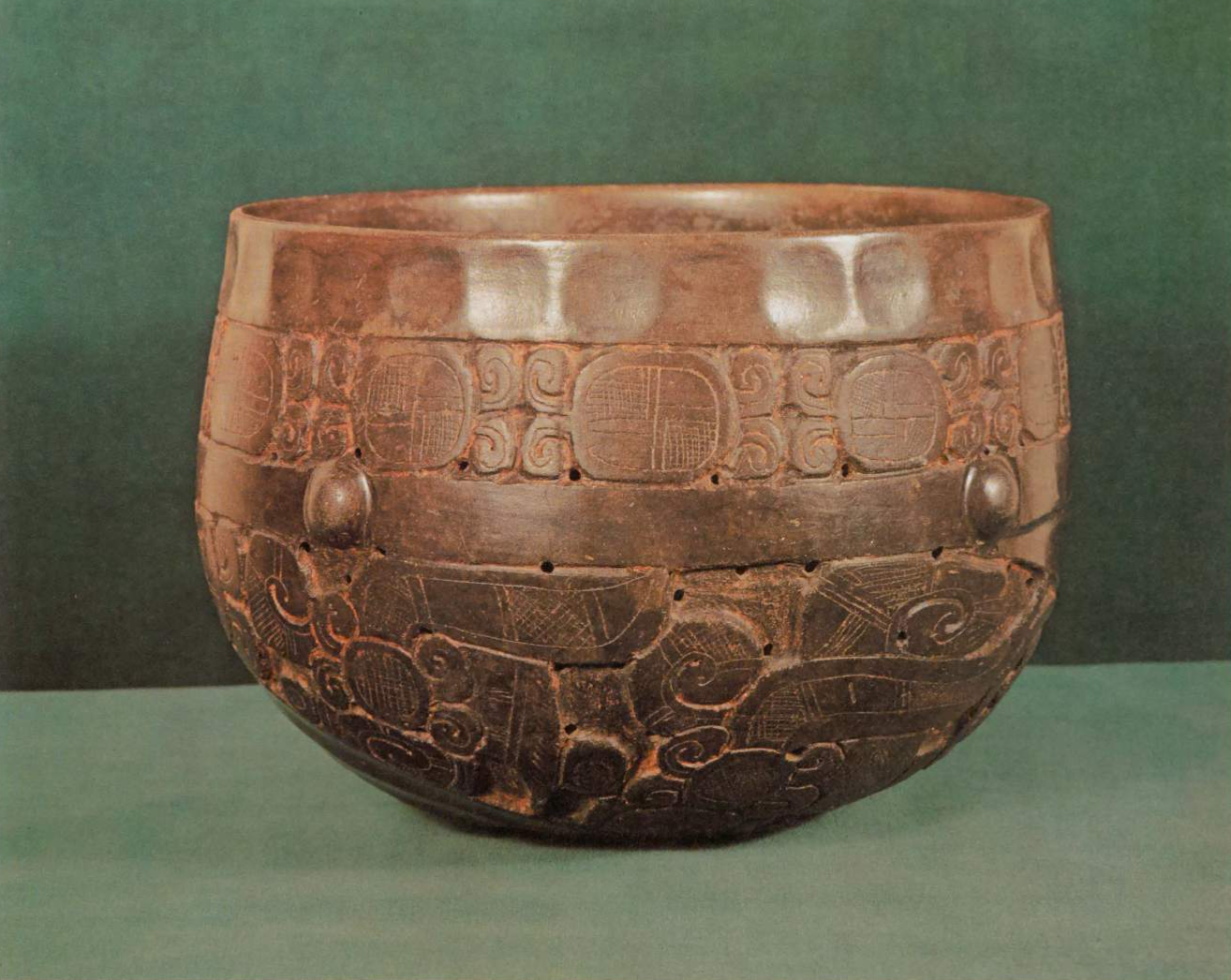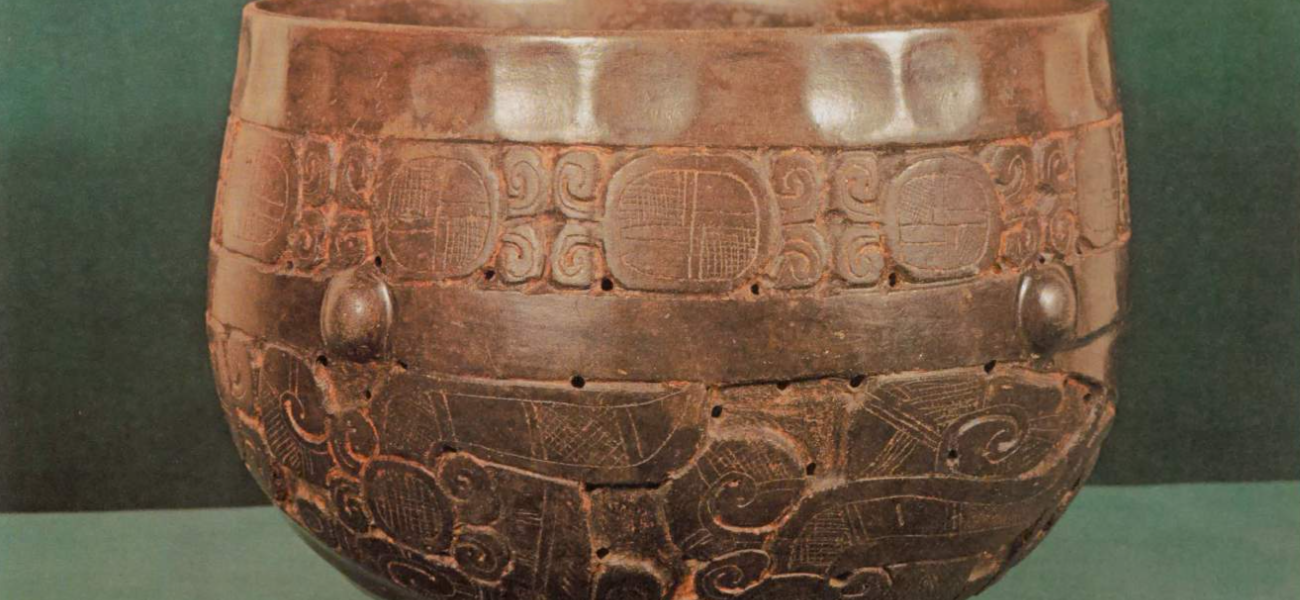Like all Pre-columbian pottery, this bowl was not made on a wheel, but was formed from coils of clay. Two bowls were pressed together at the lip to form a double-walled vessel with a space between the walls at the bottom of the bowl; in this space there are rattles of stone or clay. Small holes in the bottom of the vessel allow the sound to be heard more clearly. The top border consists of a series of indentations, possibly made by a thumb. A band of glyphlike elements surrounds the next plane of the vase, and below are four widely spaced bosses. The base of the bowl consists of a double swirl design, half of which is fluted and polished; the other half is carved and incised with glyphlike designs, and contains the small sound emitting perforations. The surface is highly polished, and there are traces of cinnabar, or mercuric oxide, on some of the incised areas.


